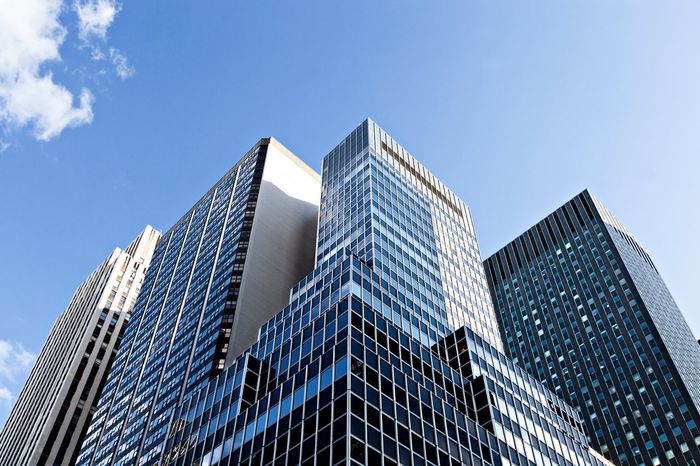COST SEGREGATION FOR BUILDINGS AND IMPROVEMENTS
When a business is purchased, not only does it incorporate a building structure, but it additionally covers all of its interior and exterior components. Ordinarily, 20% to 40% of those components fall into tax classes that can be written off much quicker than the building structure. A
Cost Segregation Study dissects the property's development cost or purchase price that would otherwise be depreciated over 27 ½ or 39 years. The primary goal of a
Cost Segregation Study is to recognize all property-related costs that can be depreciated over 5, 7, and 15 years. For example, certain electrical outlets dedicated to equipment such as appliances or computers should be declined over five years.
COST SEGREGATION STUDIES CAN BE CONDUCTED ON ANY TYPE OF BUILDING.
HERE ARE A FEW EXAMPLES
- Apartment
- Assisted Living
- Auto Dealership
- Bank, Branch Office
- Car & Truck Repair
- Casino
- Cold Storage
- Distribution Center
- Food Processing Facility
- Gas Station with Convenience Store
- Golf Course & Country Club
- Hospital or Medical Center
- Hotel
- Indoor Growing Facility
- Manufacturing, Heavy
- Manufacturing, Light
- Office, General
- Office, Medical
- R&D Facility
- Residential Rental
- Restaurant, Fast Food
- Restaurant, Fine Dining
- Retail, General
- Retail, Shopping Center
- Self Storage Facility
- Supermarket
- Theater
- Veterinary Facility
- Warehouse or Industrial Property
The IRS issued comprehensive Repair Regulations regarding the deduction and capitalization of expenditures related to tangible property. The regulations are commonly known as the Repair Regulations or the Tangible Property Regulations. The regs apply to businesses in all industries that acquire, produce, replace or improve tangible property...
Application of the new Repair Regulations requires an in-depth understanding of various tax cases and circumstances that must be met.
The Repair Regulations primarily influence real property and provide meaningful benefits even if a cost segregation study has already been performed. IRS procedures allow you to apply these rules retroactively and claim any desired deductions using Form 3115. Fixing these errors is deemed an
Automatic Change of Accounting Method and does not require altering any returns. Ordinarily, anyone that has incurred high costs for improvements to their existing business in the last 15 years is an ideal applicant. The original developments should be placed in service for at least one year before renovations occur.
A Fixed Asset Review evaluates a company's federal tax depreciation schedule over the last 20 years and allows the relevant tax lives to misclassified assets. While a
Cost Segregation Study focuses on buildings, a
Fixed Asset Review comprises all fixed assets a company owns, including:
- Real Property
- Machinery
- Furniture
- Fixtures and
- Equipment
Misclassifications are generally caused due to changes to case law, the use of "book" lives for tax purposes, or the in-depth knowledge necessary to determine correct lives.
What is eligible for 45L Tax Credits?
A residence unit should provide a level of heating and cooling energy consumption significantly less than specific national energy standards, depending on when the team is sold or leased. Based on current development trends, many developments already exceed these standards. All residential developments and apartment buildings completed within the last four years are worth assessing potential 45L tax credits. Eligible construction also includes substantial reconstruction and rehabilitation. Homebuilders and developers can still retroactively claim the 45L tax credit if they did not claim it on previous tax returns.
Who Benefits?
- Homebuilders
- Multifamily Developers
What buildings or projects can qualify for 45L Tax Credits?
- Affordable Housing (LIHTC)
- Apartment Buildings
- Assisted Living Facilities
- Production home developments
- Residential Condominiums
- Student Housing
- Substantial Reconstruction or Rehabilitation
What is the Claiming Process?
The basis for developing and supporting the 45L tax credit is a detailed energy analysis that must be certified by a qualified third party. Our multi-disciplinary team of engineers and tax experts will ensure that you obtain the maximum tax credits and provide all the documentation necessary to sustain an IRS audit. We use IRS-approved software programs for the IRC Sec. 45L certification.
The Energy-Efficient Commercial Buildings Tax Deduction, originally made effective on 1/1/2006, is a significant financial incentive geared towards:
- Building owners (commercial or multifamily)
- Tenants making improvements
- Architects, engineers, and other designers of government buildings
To qualify, newly constructed buildings and improvements to existing buildings must meet or exceed specific energy reduction requirements. Recent tax legislation extended the Energy Efficient Commercial Buildings Deduction, offering a
tax deduction of up to $1.80/SF
to those investing in energy-efficient improvements placed in service after December 31, 2005.
Who are Ideal Candidates for the 179D Tax Deduction?
Unlike most deductions, which are based on the amount spent, this is primarily based on affected square footage. Ideal candidates will generally have improvements with a square footage of at least 50,000 square feet. From simple lighting retrofits to full-scale construction projects, a wide range of enhancements qualify for this timely tax break. Other great candidates include regional or national chains with multiple locations.
What is the Process for Claiming 179D Tax Deduction?
The basis for developing and supporting this deduction is a detailed engineering analysis, as prescribed by the IRS. Our multi-disciplinary team of engineers and tax experts will ensure that you obtain the maximum available deductions while following IRS guidance to certify the tax deductions properly. Additionally, our team can help you claim deductions that were missed from prior years.
Research and Development Tax Credit
The R&D Tax Credit (26 U.S. Code §41), also known as the Research and Experimentation (R&E) tax credit, is a federal benefit that provides companies dollar-for-dollar cash savings for performing activities related to the development, design, or improvement of products, processes, formulas, or software.
This credit gives much-needed cash to hire extra workers, increase R&D, expand facilities, and more. The credit was established in 1981 to incite innovation and encourage investment in growth in the U.S. Since then. Many states have also passed the R&D Tax Credit. As such, this benefit is available across a wide variety of industries. Some of the common industries that include, but are not limited to:
- Automobile
- Architecture & Engineering
- Aerospace
- Brewery
- Chemical & Formula
- Fabrication
- Food & Beverage
- Life Science
- Machining
- Manufacturing
- Software Development
- Tool & Die Casting
- Winery & Vineyard
- Foundry








